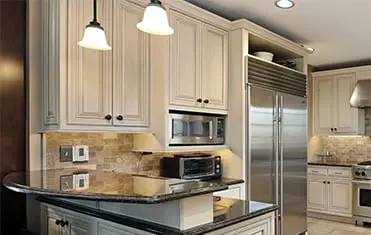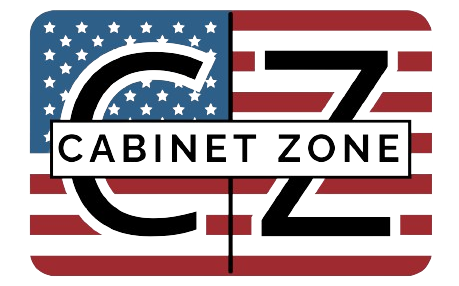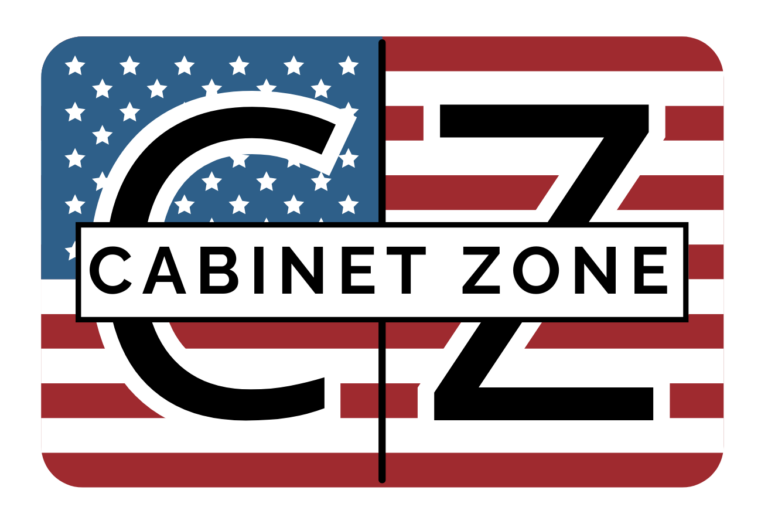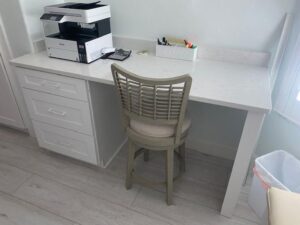Importance of Kitchen Remodeling
Kitchen remodeling is a critical home improvement project that offers multiple benefits, including increasing your home’s value, improving functionality, and enhancing aesthetics. A well-planned kitchen remodel can transform your space, making it more efficient, visually appealing, and better suited to your lifestyle.
Increase in Home Value
One of the most significant advantages of remodeling your kitchen is the potential increase in your home’s overall value. A modern, updated kitchen is a key selling point for prospective buyers, often leading to a higher return on investment when you decide to sell your home. By incorporating quality cabinets, such as those offered by Cabinet Zone, you can ensure that your remodeled kitchen not only looks great but also adds substantial value to your property.
Improved Functionality
A kitchen remodel allows you to customize your space according to your specific needs, leading to improved functionality. Whether you need more storage, better workflow, or modern appliances, remodeling gives you the opportunity to make your kitchen work for you. Cabinet Zone provides a wide range of cabinetry options designed to optimize your kitchen’s functionality, helping you make the most of every square inch.
Enhanced Aesthetics
In addition to improving functionality, a kitchen remodel enhances the visual appeal of your space. It’s an opportunity to modernize outdated designs and create a comfortable, stylish cooking environment. With a selection of high-quality cabinets and countertops from Cabinet Zone, you can achieve a cohesive, modern look that reflects your personal taste and complements the rest of your home.
Planning Your Kitchen Remodel
Successful kitchen remodeling begins with thorough planning. This process includes setting a budget, determining your needs and wants, and creating a realistic timeline for completion.
Setting a Budget
When setting your budget, consider the following:
- Cost of Materials: Factor in the price of cabinets, countertops, flooring, and other materials.
- Labor Costs: Include the cost of hiring professionals for installation and any necessary construction work.
- Unexpected Expenses: Plan for potential changes during construction or repair works that may be needed before starting the remodel.
Cabinet Zone offers cabinets at various price points, allowing you to find high-quality options that fit within your budget.
Determining Your Needs and Wants
Identifying your needs versus your wants is crucial to staying on budget and ensuring that your remodel meets your practical requirements. Consider the following:
- Cooking Needs: Determine the layout and appliances that will make meal preparation more efficient.
- Storage Requirements: Assess how much storage you need for cookware, utensils, and pantry items.
- Seating and Dining Options: Decide if you need a space for dining within the kitchen, such as a breakfast nook or island seating.
Creating a Timeline
Your kitchen remodel should include these phases:
- Design Phase: Decide on style choices and purchase materials.
- Construction Phase: Carry out the actual building work, including demolition, installation of cabinets, and other structural changes.
- Finishing Touches: Apply minor adjustments, final clean-up, and ensure everything is up to your standards.
Choosing a Kitchen Layout
Selecting an appropriate kitchen layout is crucial for optimal usage of the space. The layout you choose depends on factors such as available space, traffic flow patterns, and how you plan to use your kitchen.
Popular Kitchen Layouts
Here are some common layouts that homeowners often choose:
- One-Wall: All appliances and cabinets are fixed on one wall; ideal for small spaces.
- Galley: Features two parallel walls or counters with a walking path in between; efficient for small to medium-sized kitchens.
- L-Shaped: Countertops form an ‘L’ shape, providing ample corner space; great for open floor plans.
- U-Shaped: Offers maximum storage and counter space, with cabinets on three walls; ideal for larger kitchens.
- Island: Central stand-alone workspace, perfect for open-concept kitchens; can include additional storage or seating.
Factors to Consider When Choosing a Layout
Consider the following factors when deciding on a kitchen layout:
- Space Availability: Measure your kitchen to determine which layout fits best.
- Traffic Flow: Ensure a clear path between key areas such as the stove, sink, and refrigerator to maintain efficiency.
- Work Triangle Concept: Position the stove, sink, and refrigerator in a triangular layout to minimize movement during cooking.
Selecting Kitchen Cabinets and Countertops
Cabinets and countertops are essential components of any kitchen, serving both functional and aesthetic purposes. The wide range of options available allows homeowners to select based on budget, style, and functionality.
Cabinet Options
Different types of cabinets include:
- Stock Cabinets: Pre-made in standard sizes; the most affordable option.
- Semi-Custom Cabinets: Allow for minor size adjustments and a wider range of styles.
- Custom Cabinets: Made-to-order according to specific requirements; the priciest option, but offers complete customization.
Cabinet Zone offers a comprehensive selection of cabinets, from budget-friendly stock options to fully customizable solutions, ensuring you find the perfect fit for your kitchen.

Countertop Materials
Countertops serve as both a workspace and a design statement in your kitchen. Options for countertop materials range from natural stones like granite and quartz to more budget-friendly man-made options such as laminate.
- Granite: Durable, heat-resistant, and offers a luxurious look.
- Quartz: Non-porous, easy to maintain, and available in a variety of colors and patterns.
- Laminate: Cost-effective and available in a wide range of designs.
- Wood: Provides a warm, natural appearance but requires regular maintenance.
- Stainless Steel: Durable, heat-resistant, and gives a modern, industrial look.
Choosing Appliances and Fixtures
Installing energy-efficient appliances and modern fixtures can enhance both the functionality and aesthetics of your kitchen.
Energy-Efficient Appliances
Examples of energy-saving kitchen appliances include:
- Refrigerators: Look for models with high Energy Star ratings to reduce electricity usage.
- Ovens and Stoves: Consider induction cooktops and convection ovens for more efficient cooking.
- Dishwashers: Modern dishwashers use less water and energy, reducing utility bills over time.
Kitchen Fixtures
Kitchen fixtures complement your overall decor while providing essential functionality:
- Sinks: Choose a durable material like stainless steel or granite composite.
- Faucets: Consider touchless faucets for convenience and water conservation.
- Lighting Fixtures: Install task lighting under cabinets and ambient lighting to create a well-lit, inviting space.
Flooring Options
The right flooring enhances the look of your kitchen while offering durability and ease of cleaning. Options include:
- Hardwood: Timeless and durable but requires regular maintenance.
- Tile: Available in various styles, resistant to water and stains, and easy to clean.
- Laminate: A budget-friendly alternative to hardwood, offering a similar look with easier maintenance.
- Vinyl: Durable, water-resistant, and available in a wide range of designs, including wood and stone looks.
Hiring Professionals vs. DIY
Choosing between hiring professionals or doing it yourself (DIY) depends on the complexity of the project, the required skill level, and the time constraints involved.
When to Hire Professionals
Hire professionals when large-scale changes are required, especially those involving electrical wiring, plumbing, or heavy construction. Professionals ensure quality work and adhere to building codes, reducing the risk of costly mistakes.
When to Consider DIY
Small-scale updates, such as painting cabinets or changing fixtures, can be done yourself. DIY projects save money but require a certain level of skill and time commitment.
Pros and Cons of Both Options
- Hiring Professionals: Guarantees high-quality work but can be expensive.
- DIY: Cost-effective and allows for personal involvement but may lack professional finish and could take longer to complete.
Finalizing Your Kitchen Remodel
Once the remodel is complete, it’s important to ensure that everything is according to plan and make any necessary adjustments.
Inspecting the Work
Conduct a thorough inspection to ensure that all tasks have been completed to your satisfaction before making the final payment. Check for any issues with cabinet installation, appliance functionality, and overall finish.
Making Necessary Adjustments
If any issues surface during the inspection, address them immediately. This might include minor adjustments to cabinets, fixing any imperfections, or ensuring that all appliances are properly installed.
Lastly, enjoy your new kitchen with its enhanced look and functionality, knowing that the quality cabinets from Cabinet Zone contribute to a space that is both beautiful and practical.
FAQ Section
- What factors should I consider when setting a budget for my kitchen remodel?
Consider the cost of materials, labor costs, and possible unexpected expenses such as repairs needed before starting. - Why should I care about traffic flow while deciding on a kitchen layout?
Good traffic flow improves efficiency by reducing unnecessary movement while cooking, making your kitchen more functional. - What’s the difference between semi-custom and custom cabinets?
Semi-custom cabinets allow for minor size changes, while custom cabinets are made-to-order based on specific requirements, offering complete customization. - Are energy-efficient appliances worth the investment?
Yes. While they might cost more upfront, they save money in the long run by reducing utility bills and are better for the environment. - When should I hire professionals for remodeling instead of doing it myself (DIY)?
Hire professionals when major structural, electrical, or plumbing modifications are involved that require skilled handling.



